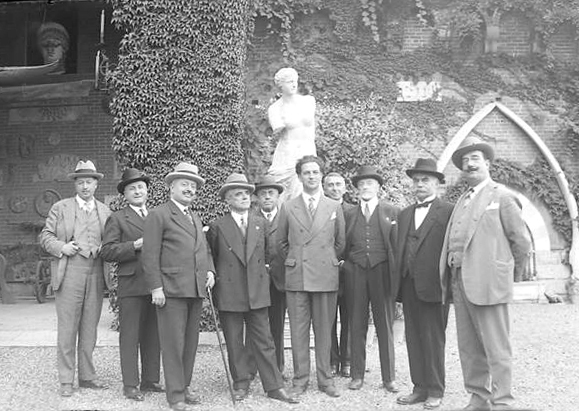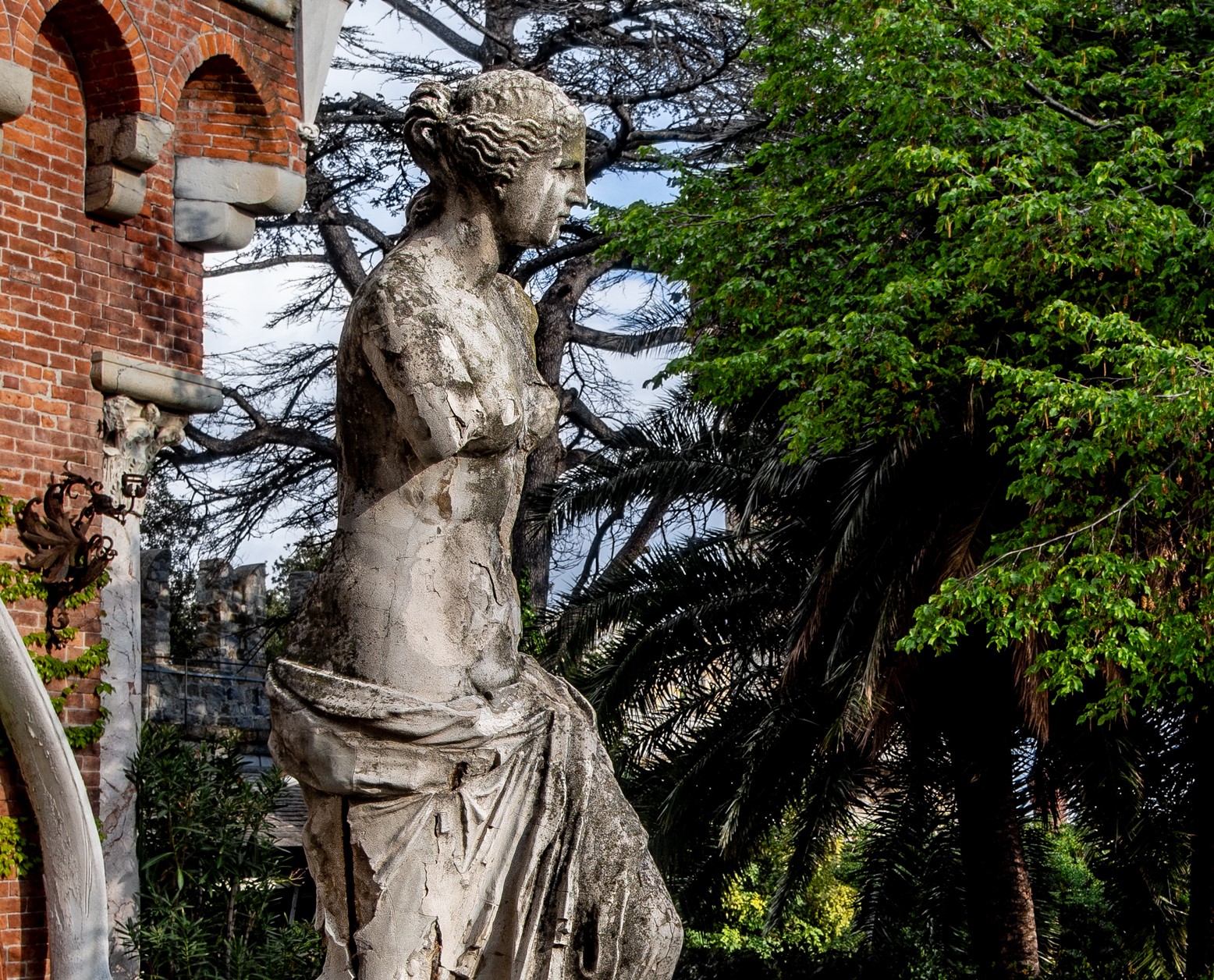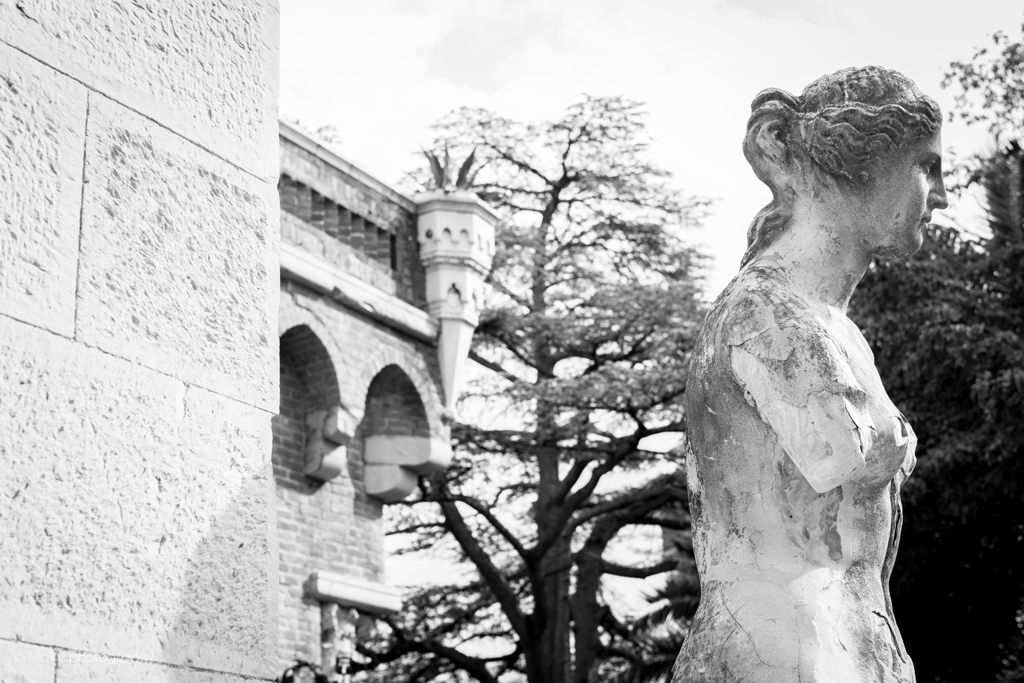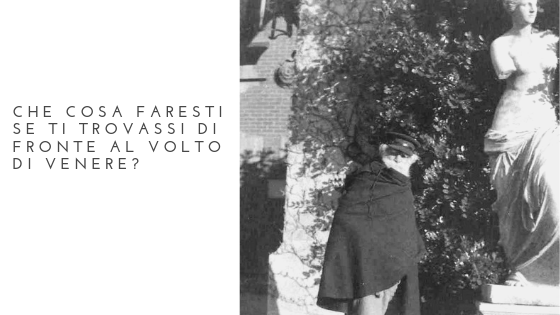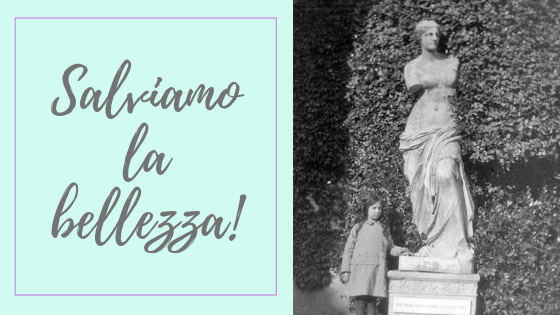
Un progetto di
Briciole di Venere
Cosa faresti se ti trovassi di fronte al volto di Venere?
Questo chiedeva il Cap. d’Albertis agli ospiti e agli amici in visita al suo castello costruito a fine Ottocento in posizione dominante sulla città di Genova e sul mare. Lo faceva con un divertente gioco di parole in latino: QUID FACIES FACIES VENERIS SI VENERIS ANTE?
Fu certamente sorpresa l’espressione degli archeologi di fronte al ritrovamento della statua di Venere nel 1820 sull’isola greca di Milos. La scoperta colpì per la sua eccezionalità l’immaginario collettivo di critici ed artisti, che continuarono per tutto il XIX secolo a celebrarla nel mondo come simbolo della bellezza femminile.
Affascinato certamente da un’opera così enigmatica e misteriosa, il Capitano D'Albertis ne volle una riproduzione per collocarla nel parco della sua dimora genovese e la commissionò in un materiale del tutto innovativo per l’epoca: la pietra artificiale. Proprio grazie all’impiego di un materiale nuovo e ancora in fase di sperimentazione, la Venere di Castello D’Albertis si caratterizza in maniera inedita e originale rispetto alle copie di quel periodo. Si tratta dunque di un’opera d’avanguardia, in piena coerenza con il carattere di esploratore ed anticipatore del suo committente-ideatore.
Oggi le condizioni conservative della Venere appaiono estremamente gravi e progressive a causa dello sbriciolamento della pietra artificiale.
E dunque: QUID FACIES FACIES VENERIS SI VENERIS ANTE?
Puoi guardarla tristemente segnata dallo scorrere del tempo o cogliere l’opportunità di salvarla
SALVARE LA BELLEZZA È POSSIBILE!
Con una donazione minima di 10 euro puoi contribuire al restauro, diventare amico del Castello ed essere inserito nella newsletter.
Come ringraziamento alla tua donazione ti aspettano inoltre:
- Ingresso gratuito per una persona (da 10 a 20 euro)
- Incontro con la restauratrice e visita al cantiere (da 20 a 40 euro)
- Esclusiva visita fotografica in orario di chiusura del Castello (da 40 a 60 euro)
- Set fotografico con la Venere restaurata (da 60 euro)
---------------------------------------------------------------------------------------------------------
ENGLISH VERSION
What would you do if you found yourself before Venus’s face?
Cap. d’Albertis used to ask this question to his friends visiting him in his castle, when they were confronted with his statue of the Venus from Milos, placed beside the castle entrance in a dominating position overlooking the sea and the city. He did this with a language trick in Latin: QUID FACIES FACIES VENERIS SI VENERIS ANTE?
The archaeologists’ expression on their faces was certainly of amazement when the Venus statue was discovered in 1820 in the Greek Island of Milos. The discovery hit everybody’s imagination and not only critics and artists continued to celebrate her during the following decades as an eternal symbol of feminine beauty.
Captain d’Albertis was certainly fascinated by such a mysterious and enigmatic work of art and wanted to have one for himself: he had it made with an innovative material for the period: the so called artificial stone. Because of the use of this concrete conglomerate that was still in its infancy, Castello D’Albertis’s Venus is particularly original and exclusive, a piece of avant guarde, tightly coherent with the explorer attitude of his commissioner.
Today’s conditions of the Venus are extremely severe because of the crumbling of the stone.
Therefore: QUID FACIES FACIES VENERIS SI VENERIS ANTE?
You can look at it sadly or you can catch at the opportunity of saving it!
IT IS POSSIBLE TO SAVE BEAUTY!
With a minimum donation of 10 euros you can contribute to its restoration, become a friend of the captain, and receive the museum’s newsletter.
Furthermore, as a reward, different options await you
- Free entrance to the museum for one person (from 10 to 20 euros)
- Meeting with the restorer and visit to the restoration area behind the stage (from 20 to 40 euros)
- Exclusive photo shooting opportunity in the castle when the museum is closed (from 40 a 60 euros)
- Photographic set with the restored Venus (from 60 euros)
